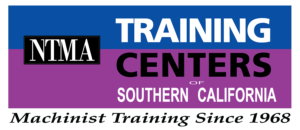
DfM or Design for Manufacturing is a common concept we teach all of our students at NTMA. Anyone can design a part in CAD Software, but it takes some practical knowledge to understand what is and isn’t manufacturable in the real world. Below are a few common manufacturing technologies that require applying DfM prior to designing any given product:
- DfAM (Design for Additive Manufacturing) – With 3D Printing, designers have more flexibility and freedom compared to older, traditional methodologies. Still, though, these printers have limitations like anything and should be taken into consideration prior to beginning a design.
- CNC Machining – All of our students undergo a series of DfM for CNC, in conjunction with training on Blueprint Reading and GD&T. Knowing the limitations for a given CNC Machine will help eliminate any re-work down the road, and should always be top of mind to whoever is designing parts to later be machined!
- Sheet Metal – Similar to CNC, tooling and fixtures can only do so much, as there are still operations and geometries that simply aren’t possible with a given sheet metal machine.
For someone looking to go into CAD Designing, CAM Programming, or any type of 3D Modeling in an industrial space, DfM should be the first thing that comes to mind before starting any project. Knowing the size, speed, temperature, and machine limitations ahead of time is the best preventative measure and will ensure a smooth product development cycle if done properly.
If you want to learn about our Design and Manufacturing curriculums, consider checking out our ETP Training page to learn more!




